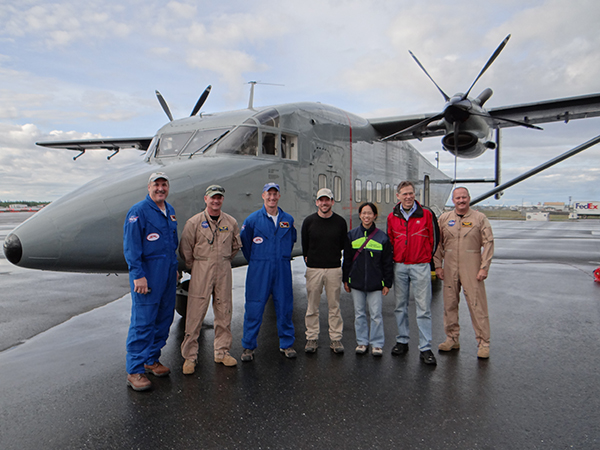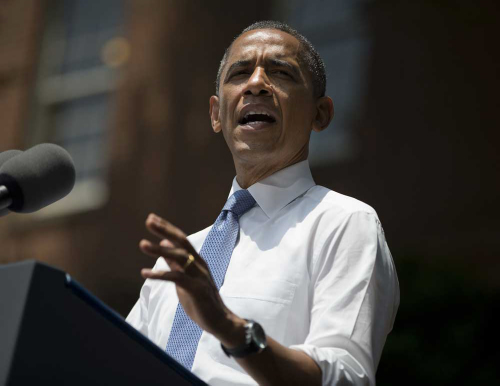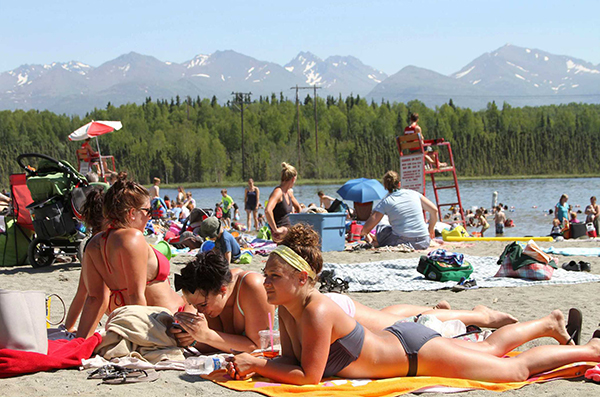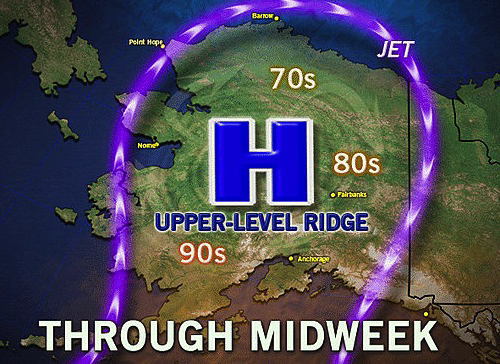4 or 40 years late climate thrust to front page


Amazed and Troubled: Crews flying eight hours a day at a mere 150 metres to the Arctic coastline and back have found ‘amazing and potentially troubling’ levels of methane and carbon dioxide wafting up from what should be permafrost. image National Aeronautics and Space Administration
George Monbiot declared 28 August 2012 as the day world went mad.
Writing on the following day, the Guardian’s respected environmental journalist asked readers to remember that date. It was the day that scientists announced the record Arctic ice melt, unnoticed by the mainstream media—in the United Kingdom, headlines concentrated on the calls for a third runway to be built at Heathrow.
Two weeks ago the world went madder. A press release by the National Aeronautics and Space Administration quoting their scientists observations of ‘amazing and potentially troubling’ levels of methane and carbon dioxide being released from the Arctic permafrost in Alaska, met with total mainstream media indifference. The exception is an opinion piece in The Hindu, India’s third largest English language daily. It is symptomatic of the failure of the world’s press that the piece was written not by a journalist, but by a physicist, Vasant Natarajan of the Indian Institute of Science. Professor Natarajan’s piece ends:
Do something. The very survival of humankind is at stake.
When a physicist world-renowned for the accuracy of his work, and the NASA scientists he is referencing, use language that reflects their extreme alarm about what they are seeing, non-scientists can be excused for thinking ‘Houston, we have a problem.’

Doing What He Can: After four years of Republican Party congressional prevarication, President Barack Obama has cracked down on coal-powered electricity generators by instructing by the Environmental Protection Agency—established by a bipartisan executive and congress in 1970—to exercise its Supreme Court –confirmed authority to regulate carbon dioxide emissions. image Associated Press
This morning from the steps of the venerable Georgetown University, President Barack Obama laid out, to invited students and dignitaries, his climate action plan:
I refuse to condemn your generation and future generations to a planet that’s beyond fixing. And that’s why, today, I’m announcing a new national climate action plan, and I’m here to enlist your generation’s help in keeping the United States of America a leader—a global leader—in the fight against climate change.
Scorn will be heaped upon the president from left and right. The Left will characterise his vision as four years too late to be worthy—others might say 40 years too late. The Right will claim that his measures, which include the regulation of existing power plants, will place an unacceptable burden on the United States’ economy.
What has changed, however, is that global warming, for the first time, is now mainstream—no longer does the media need to fear loosing bums on seats to an issue it had early on determined was a turn-off. But if the climate-informed are expecting media redemption and an age of enlightenment to sweep in, they will probably be disappointed. The mainstream media has long since shed its science writers. By forcing global warming on the front page, President Obama will provoke responses from editorial teams ill-equipped to handle the heat. Rather than working from a position well grounded in climate science, they will be incapable of sorting the chaff from the hay, and the fossil-fuel oligarchy has an army of disinformers poised, practiced in providing the media with all the chaff it can swallow, in bite-sized portions. That the 49th state is hitting the headlines as ‘Baked Alaska’ thanks to an historically unprecedented heat wave, with scant mention of the cause of its severity, typifies the mainstream media’s failure to report on civilisation’s defining issue.
Closer to home, last week’s unusually heavy snowfall in the South Island will have many doubting global warming afresh. Thanks, it seems, to the onset of negative Southern Annular Mode, Aotearoa was enveloped in a low-pressure zone, the polar opposite of the high-pressure ‘dome’ that caused Alaska’s heat wave. Antarctic air, from nearly as far south as the sea ice was drawn northward. Nevertheless, the Antarctic is warming, spectacularly in the Antarctic Peninsula region. This is despite the sea ice extending, south of Aotearoa, possibly on account of stronger southerly wind flow. Ironically, this could be a genuine case of natural variability. However, what is not known with any great accuracy is whether the volume of Antarctic sea ice is changing—it is relatively easy to map the extent via satellite, less easy to map thickness. While those impatient for ‘mankind’ to walk on Mars want NASA’s annual budget doubled to $36 billion, climate scientists have been denied the missions that could more definitively determine the speed with which the planet is becoming ice-free.

Goose Cooking: Sunbathers at Lake Goose, Alaska during last week’s heat wave that saw innumerable temperatures broken including in Talkeetna, the inspiration for Northern Exposure, which hit 35°. image Associated Press
An extreme weather event, such as ‘one of the most brutal southerlies ever seen in New Zealand’, is exactly the time the mainstream media should be examining anthropogenic global warming, even if, or particularly if, to say that in this case, it is difficult to quantify to what degree its intensity is due to warming. Or to say that this is a perfect illustration that, with more and better resourced climate scientists, farmers in particular could be better informed as to how much more brutal these events might become, as the hole in ozone layer heals and Antarctic follows the Arctic towards an inevitable ice-free state.
The team of scientists flying eight hours a day out of Fairbanks, Alaska, in a noisy no-frills C-23 Sherpa aircraft, have only started to scratch the surface, but the measurements they have already made in two months are already spine chilling. Arctic permafrost soils hold four to five times more carbon than has been burned since the beginning of the industrial revolution. With the dramatic warming of the region, that carbon is on the move in the form of carbon dioxide and methane. Because methane molecule-for-molecule, in the short term, traps more than 100 times the heat of carbon dioxide, the feedback from it is particularly ‘troubling’. Additionally, the wetter the climate, the greater the percentage of carbon released from the thawing soils will be in the form of methane, and a wetter climate is exactly what is forecast for the region. Until at least another season of data is collected and analysed, in a year’s time, it won’t be known whether the methane and carbon dioxide release is accelerating, or how fast. With one or two less Mars missions in the past, presidents prior to Obama may have been in a position to convince congress that a crash programme to replace fossil fuels was urgent. President William Clinton, for example, would have had the hard data to hold up to the antinuclear lobby, instead of buckling to it and scuttling the development of fourth-generation nuclear power. Measured against this indispensable and nuclear waste –eating technology, the potential contribution of photovoltaic power is puny—it will not begin to power the free electrified public transport pivotal to prising city drivers out of the world’s more than one billion cars.

In the Loop: Global warming is messing with the jet stream, weakening it and causing it to meander more. Here, Alaska is stuck under a high-pressure ‘dome’ holding out the cold Arctic air. image Climate Progress
As Clinton’s vice-president, his part in preventing the Argonne National Laboratory demonstrating fourth-generation nuclear technology was Al Gore’s greatest error of judgement. Fortunately President Barack Obama doesn’t share his anti-nuclear ideology. Gore’s second greatest error was his decision to campaign for presidency on the economy rather than on climate action, blowing his one chance to speak his inconveniently incontrovertible truths from the world’s biggest stage—that is, the United States presidential campaign, not the presidency, from which he probably would have been able to achieve much less on global warming than has President Obama, given that the Democrats lost the Senate and the House of Representatives remained in Republican hands.
The reason climate action is 40 years late in being front-paged is that for much of the time the United States’ press, congress and presidency has been firmly in the pocket of the fossil-fuel oligarchy. Barack Obama became president on the back of individual supporters—subscribing an unprecedented $600 million, online. While many were dismayed at the apparent lack of climate action, the much-maligned and rarely defended stimulus was the mother of all green energy packages.
With good reason, many will withhold praise for today’s presidential climate action plan until his decision on the Keystone XL pipeline, in November at the earliest. That the president, unexpectedly, used the K-word is being seen by both pro and anti –Keystone XL camps as a softening up. The Mahurangi Magazine chooses to interpret the president’s emphasis on the pipeline’s climatic impact, as opposed that of its construction and operation, as sign he will not give his consent:
The net effects of the pipeline’s impact on our climate will be absolutely critical to determining whether this project is allowed to go forward. It’s relevant.
Had efforts begun in earnest 40 years ago to reduce humanity’s propensity for growth and rapacious appetite for resources, future decades would not loom as grimly as they now do. But Barack Obama began investing heavily on clean energy within months of becoming president, enacting plans that were pulled together in a stringently short time even before being sworn in. History may condemn him for not making the stimulus solely about clean energy, energy conservation and climate adaptation, but it is more likely to lay the blame on the prostitution of democracy and the fourth estate by big business. While the powers of the president of the United States are formidable in some theatres, in others they are puny.
With this morning’s momentous speech, President Obama, to paraphrase Professor Natarajan, is doing something, because the very survival of humankind is at stake.

Very sincere thanks for this article—and dripping water does wear away stone!